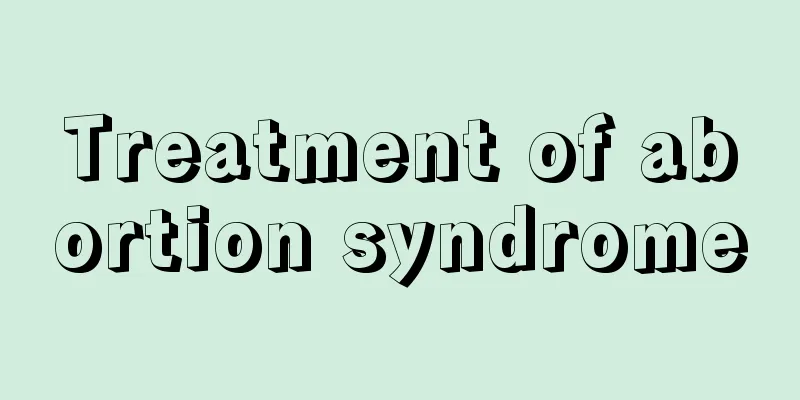Can otolithiasis be cured? What treatments are available?

|
Author: Wang Ningyu, Chief Physician, Beijing Chaoyang Hospital, Capital Medical University Member of the Otorhinolaryngology and Head and Neck Surgery Committee of the Chinese Medical Association Reviewer: Liu Yuhe, Chief Physician, Beijing Friendship Hospital, Capital Medical University Vice Chairman of the Science Popularization Branch of the Chinese Medical Association 1. Can otolithiasis be completely cured? First of all, we need to clarify the specific meaning of the word "thoroughly". If "thoroughly cure" means whether an illness can be completely cured, then the answer is yes. However, we have many otoliths, and there is a certain risk of them falling off. If they are cured once, another one may fall off and not be captured and digested by the relevant tissues and cells. Then, it may float into the semicircular canal with the endolymph, causing the disease to occur again. Moreover, the otolith is a very important organ, and we cannot remove it. Therefore, from the perspective of whether the disease will recur in the future, otolith disease cannot be cured. After being cured once, it may occur a second time. The above mentioned are relatively simple cases. In addition, there is another case called complex otolithiasis. In this case, more than one otolith falls off, and it may enter more than two semicircular canals from two directions at the same time. Therefore, in this case, diagnosis and treatment will be more complicated, and there will be some cases that cannot be cured at once. At this time, more detailed auxiliary examinations may be needed, followed by careful study and judgment, and finally some more sophisticated and thoughtful treatments. In some cases, vertigo symptoms can also occur in other diseases, such as Meniere's disease, drug-induced deafness, vestibular nerve disease, and even high blood pressure, cerebellar or brainstem hemorrhage, etc. Therefore, doctors need to make a comprehensive judgment and symptomatic treatment. 2. What are the treatments for otolithiasis? The most important and effective method for treating otolithiasis is repositioning. Otolithiasis is a disease in which the otoliths located in the vestibule fall off and move to the semicircular canals, affecting the body's balance function and causing symptoms such as dizziness and nystagmus. The semicircular canals are usually curved, so once the otoliths enter, they usually cannot move back on their own. At this time, we can change our body position to allow the otoliths to move back into the vestibule, so that they can be captured and digested again by the dark cells in the vestibule, and the dizziness symptoms of otolithiasis will naturally disappear. However, patients usually feel some discomfort for a period of time after the repositioning, such as 3-5 days, or even 7-10 days, such as dizziness and a feeling of not being very refreshed. This is because after the otoliths fall off and return to their original positions, they may be deposited on the utricle maculae, causing an abnormal stimulation, making the patient feel dizzy and uncomfortable. Most of the symptoms will gradually ease after 3-5 days. There are two methods of repositioning. One is manual repositioning, which is to return the otoliths to the vestibule by changing the body position under the guidance and help of a doctor. Another method is repositioning with the help of an instrument. This method can not only reposition accurately, but also is safer and more convenient for patients who are not suitable for manual repositioning due to scoliosis, kyphosis, etc. Instrument resetting is to fix us on the instrument, and as the machine rotates 360 degrees at different angles, we conduct position tests according to the principle of manual resetting. By inducing nystagmus in a certain position, we can determine which semicircular canal and plane the symptoms of otolithiasis originate from, and then we can adjust the corresponding angle and perform resetting in a targeted manner. Figure 1 Original copyright image, no permission to reprint According to statistics, the recurrence rate of otolithiasis within one year is about 24%. Therefore, if otolithiasis recurs after manual or instrumental repositioning, we can use some drugs for treatment, but drug treatment can only be used as an auxiliary treatment method, and its effect is ultimately limited. It cannot directly help us reposition the detached or ectopic otoliths, nor can it ablate the otoliths, so we still have to rely on manual repositioning and instrumental repositioning for treatment. 3. What should we pay attention to in preventing otolithiasis? From a dietary perspective, in order to prevent it, you need to know which problems are likely to cause otolithiasis. Since the vestibule where the otoliths are located is an organ with a very active metabolism, many metabolic diseases can cause otolithiasis, such as high blood pressure, high blood sugar, high blood lipids, endocrine disorders, and metabolic abnormalities caused by aging. Therefore, all the dietary precautions required for these diseases should be taken into consideration. For example, do not eat high-salt foods, do not eat greasy foods, do not eat foods with too much sugar, etc. Figure 2 Original copyright image, no permission to reprint In addition, the main components of otoliths are carbonates and some minerals. Therefore, when we have physiological or pathological decalcification, which causes osteoporosis, we can supplement calcium for the whole body. This is not only good for the whole body, but also makes the otoliths healthier. Vitamin D can promote calcium absorption, so reasonable supplementation of vitamin D can also promote the recovery of otolith disease and prevent recurrence. |
>>: IDC: Global tablet shipments in Q1 2023 will be 30.7 million units, down 19.1% year-on-year
Recommend
How to apply lipstick to look good
Lipstick is a kind of cosmetics that can greatly ...
Less lochia after abortion
The situation of less lochia after abortion may b...
Discuss what exercises women with kidney deficiency should do
Kidney deficiency is no longer a strange term. Li...
Will the spring migration of migratory birds increase the risk of spreading avian influenza?
February to May every year is the time of spring ...
Can I keep a child if I have gestational hypertension?
During pregnancy, women's bodies are usually ...
Apple Suppliers in 2017 – 160 pages of PPT to help you understand
Apple's 2017 supplier map has been revealed. ...
What to do if you have a sore throat and no milk during breastfeeding
Many people often get hot during breastfeeding, a...
What kind of exercise can shrink the vagina?
For women, vaginal relaxation is not only embarra...
How can I get my period?
There may be various abnormalities in women's...
I want to know whether I can have myopia surgery or not. Should I take a test first to see if I can pass it?
More and more myopic friends Choose to go to Wuha...
When is the latest time for pregnant women to create a file
Prenatal care guidelines are created when pregnan...
What to do if you have poor appetite during pregnancy
Every pregnant woman should pay attention to the ...
Why does your heart skip a beat when you stay up late?
Have you ever been frightened by a sudden "s...
If you have these symptoms, it means your body is dehydrated.
Water occupies a large part of our body, so we ne...
Osteoporosis, have you noticed?
Bones are the largest calcium storage in our body...









